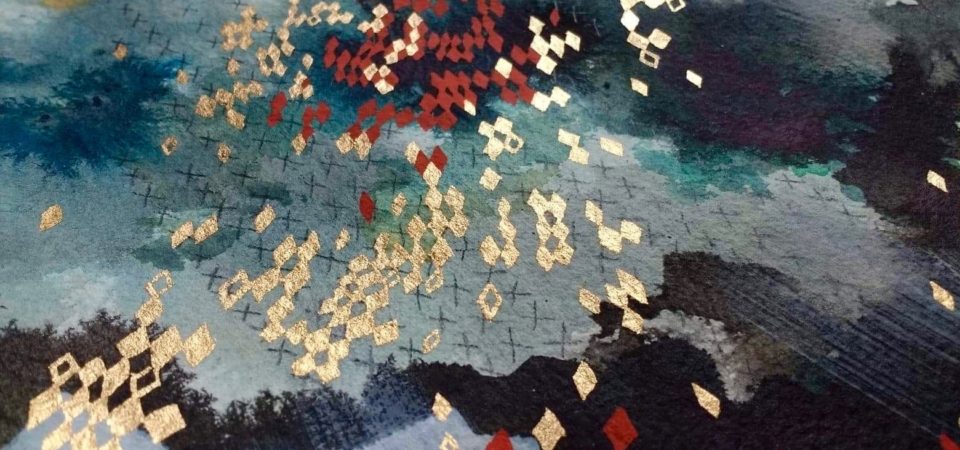Lehuauakea – Black Snakes in the Water (painting – detail) – Photo Lehuauakea © 2021
This is the second piece of four interviews in the series
This week’s publication focuses on the voices of two young, strong Indigenous women. Elevating the presence of younger generations and empowering youth has never been more crucial to protecting Mother Earth, as we are the last generation to speak out and fight against climate change. These two powerful women have inspiring words to share about Indigeneity, relationships with Mother Earth, and moving towards a better future.
Disclaimer: I do not support the tokenization and extraction of Indigenous knowledges and people. Upholding ways that respect and honor Indigenous knowledges and people is of the utmost importance. Every Indigenous interviewee and artist has given me their consent to share their words for this piece.
Cameran Bahnsen
Written Interview with Emily Johnson
Cameran Bahnsen: What do you believe are the defining aspects of how Indigenous people view the Earth?
Emily Johnson: Earth is our mother where we get all of our nourishment, both physically and spirituality. The natural world is the center of all of our stories and traditions. Historically, everything our ancestors did revolved around the earth and they had a sacred relationship with the earth. While utilizing natural resources, our ancestors did so with respect to what was being used, this was due to the recognition that humans are interconnected with Mother Earth and her resources. It wasn’t until colonization, where our ancestors had to assimilate into western culture, did that traditional sacred relationship with the land become slightly lost, as what happened to many traditions.
CB: What traditions or stories have shaped how you view and treat the Earth?
EJ: While I grew up quite far from my reservation, I was lucky enough to get to visit my reservation every now and then, while also having a large urban native community where I learned a lot of traditions and stories. Growing up mostly away from my reservation and traditional land there were still ways to connect with traditions like learning how to properly pick sage and smudge.
Another of the many traditions and stories that have really stuck with me and shaped the way I view the earth is the importance of the buffalo not only to my tribes but to all tribes living in the Great Plains. Hearing the story of the white buffalo woman at a young age made me realize that buffalo was not only a spiritual cornerstone but also was necessary for plains peoples’ survival.
All of these traditions and stories are constant reminders of how important the relationship is between the earth and Indigenous peoples. So, by connecting to my ancestors through ceremonies, traditions and stories goes I’m at the same time reconnecting with the earth.
Lehuauakea
Black Snakes in the Water (on the right: detail of the piece)
2019
22 x 36 inches
This painting addresses the historical and ongoing violent extraction of fossil fuels, uranium, metal by the United States government and corporations on Native lands. As landscapes are scarred and desecrated by these processes, the Indigenous communities and bodies that call these lands home are faced with the same violent forces. The way we treat our lands is directly mirrored in the ways we treat our communities — if our earth is bleeding, so are we.
CB: What do you think Western cultures can learn from Indigenous people when considering global environmentalism?
EJ: I think the main thing modern colonized cultures can learn from Indigenous people is the inherent connection we have as beings on this planet to our natural world. Remembering that we come from Mother Earth and are a part of this planet, not superior to it. We have to remember that we are still a part of this sacred balanced relationship and everything we do to our earth we are doing to ourselves.
CB: What does the current climate crisis, often understood to include ecosystem/habitat loss, depleting natural resources, loss of biodiversity, and changing climates, mean to you?
EJ: The current climate crisis means a lot to me, not only as a Native American or as an aspiring ecologist but as a member of this global community. It saddens me that our Mother and the collective life on this planet is in trouble and not more is getting done because protecting our earth is not most of society’s priority. However, looking to our ancestors and having these conversations gives me hope and makes me even more passionate to continue to help in conservation and sustainability.
CB: How can Indigenous ways of understanding the environment allow us (humans) to change our relationship with the Earth?
EJ: Simply remembering we are a part of this land that we are destroying. Modern colonized society has made us feel disconnected with our planet, and most of society acts as though we are superior and that we have the right to exploit Mother Earth as we please.
However, through Indigenous teachings we as a society can integrate the understanding that we are just as a part of this earth as every other being. And that anything we take from Mother Earth we need to be respectful and grateful for.
Lehuauakea
Mele O Nā Kaukani Wai
This wall installation addresses the pressing need for the integration of Indigenous traditional ecological knowledge (TEK) and western modern science. This piece touches on these ideas through the metaphorical meeting place of fresh and salt waters where the river meets the sea — the muliwai. This is represented by traditional Native Hawaiian carved ʻohe kāpala patterns that have been passed down for generations, and new designs printed with commercial gouache.
CB: Is it important that the global citizenry activate Indigenous ways of knowing?
EJ: I think it is necessary that the global citizenry look to traditional environmental knowledge as a guide in our current environmental crisis. Without looking at and putting a spotlight on Indigenous perspectives, I don’t think we will be able to live completely sustainably.
CB: Is it possible/appropriate to bridge the gap between traditional Indigenous environmental approaches and scientific knowledge to contribute to a more sustainable future?
EJ: I believe it is possible and necessary for the future of humanity and our planet. Bridging the gap between traditional environmental knowledge into modern scientific knowledge will help lead us to a sustainable future. We are already seeing it done throughout North America, with utilizing traditional land management practices like controlled burns and with the reintroduction of native species that were extirpated or eradicated after colonization.
CB: What are some community approaches to addressing the fact that Indigenous communities are often disproportionately affected by climate change?
EJ: The history of environmental injustice started as soon as colonization began and continues with modern issues. Many Indigenous community members, especially in urban environments, are no longer connected to the earth as we once were because of colonization.
From my perspective, growing up urban native, a way of combating this disconnection is getting Indigenous peoples outside while reconnecting with their heritage. There are a number of programs throughout Los Angeles that help urban Indigenous peoples to stay connected with nature and culture.
But overall, I think it is important to recognize the disproportionate environmental injustice in Indigenous communities and getting Indigenous voices heard within these discussions. Indigenous voices within environmental issues are being more easily heard thanks to social media, and hopefully leaders hear these voices and create change. Especially as the consequences of climate change increase, so will environmental injustice.
Lehuauakea
Until We Meet Again
The hand-stitched ʻaʻahu (wearable garment) in this installation is constructed from scrap fabrics, bone and ceramic beads, seashells, embroidered panels, and more — all of which tell my story as an individual from several cultural backgrounds. This piece speaks to the strength of my communities, both at home in Hawaiʻi and beyond, and the role they have played in my journey. In this way, the cloak honors the connections that root me to place and community, viewing them not as disparate but as a unified whole.
CB: What do you see as the largest barriers to enacting the change we need to see in order to live more sustainable lives and protect the Earth’s resources?
EJ: Personally, I believe our main barrier is changing the basic idea that our society has that we are no longer connected to this earth, that we are superior and that we have the right to blindly exploit our Mother. I believe that once this thought process has been erased, we as a society will start treating our earth with respect and gratefulness. Only then do I think we will be able to live sustainably. However, this is a drastic societal shift that would be difficult to do, but I know that it can be done especially if we look to Indigenous voices in order to change.
CB: What support do you and/or your community need to better address some of the challenges and problems we’ve discussed today?
EJ: I think elevated indigenous voices within environmental and climate change discussions. I also think by bridging the gap of traditional environmental knowledge and modern environmental science will help all of society, and especially Indigenous communities. Also, I think by showing Indigenous children that they can be the future of climate change and environmental science, just by looking to their ancestors. And lastly, I think by getting more Indigenous people reconnected with the culture that was once taken from us, and in turn reconnecting with Mother Earth.
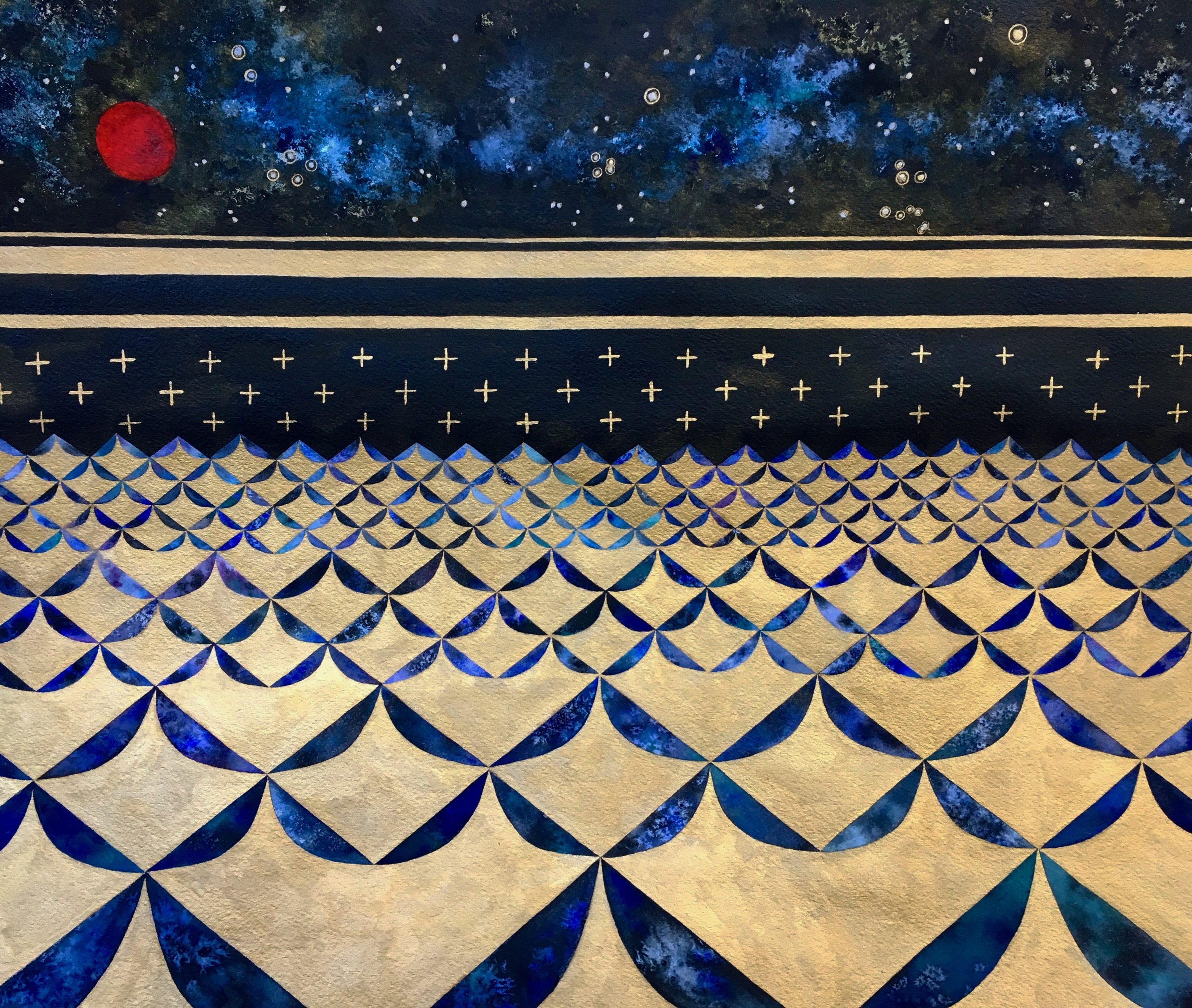
Lehuauakea
At the time when the earth became hot, at the time when the heavens turned about, at the time when the sun was darkened, to cause the moon to shine
2019
29.5 x 14 inches
With its title borrowed from the Native Hawaiian creation chant, the Kumulipo, this painting references the origin story of the Kanaka Maoli universe as birthed from the darkness at the bottom of the ocean. This common origin intrinsically connects all beings — from the smallest coral polyp to the tallest trees to the lineages of the people. With an understanding that darkness gives way to life and interconnectivity, this chant offers insight into the degradation of the world we live in today.

Lehuauakea
Kāhea
Kāhea was written after experiencing over a decade of displacement from my homelands on Moku O Keawe, the Big Island of Hawaiʻi. The title is the Hawaiian word for “call” or “summons,” which is what I felt when this poem was written in the summer of 2019, as tensions were escalating against the building of the Thirty Meter Telescope on Mauna Kea — my home mountain. These words come out of that emotional time, when my elders were being arrested for protecting our sacred mountain, and I felt called to return and do the same.
Afterthought: Thank you to both Emily and Lehua- two inspiring, passionate, and thoughtful individuals who continue to navigate their professional careers and make the world a better place. I met Emily through an internship with the National Park Service, and we quickly bonded over our shared cultural background. I am very grateful for our friendship and excited for our future adventures, as she has such an open minded and compassionate soul. I met Lehua through Brenda Mallory (first publication featured artist) and her creativity, kindness, and eloquence instantly inspired me. It is evident that she cares deeply about her people and this Earth, and I am glad to have found a friend in her. Women like Emily and Lehua give me hope for the future of our planet.
Cameran Bahnsen
Disclaimer: The words and art of the featured interviewee and artist are independent of each other and only reflect their own viewpoints and opinions. They are not reflected through each other in any way.
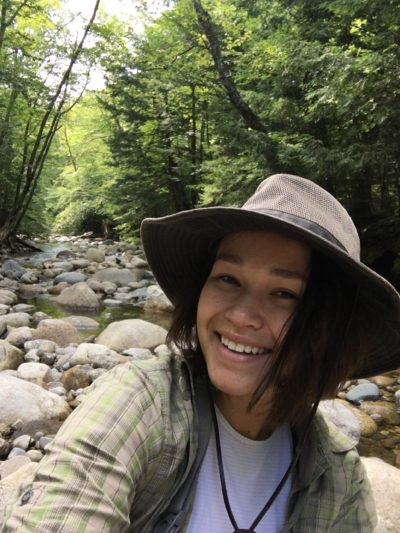 Emily Johnson Biography
Emily Johnson Biography
Emily Johnson (Wahpeton Dakota) was born and raised just outside of Los Angeles, California. She attended Fort Lewis College located in Durango, Colorado where she recently graduated with a B.S. in Biology, a concentration in Ecology and a minor in Environmental Policy. Her cultural connection to the natural world has helped guide her to a career path in ecology. She’s always been an avid nature lover and likes to ski, backpack, mountain bike and fly fish. She hopes to continue to grow her environmental knowledge within research and management in order to help aide in sustaining ecological systems.
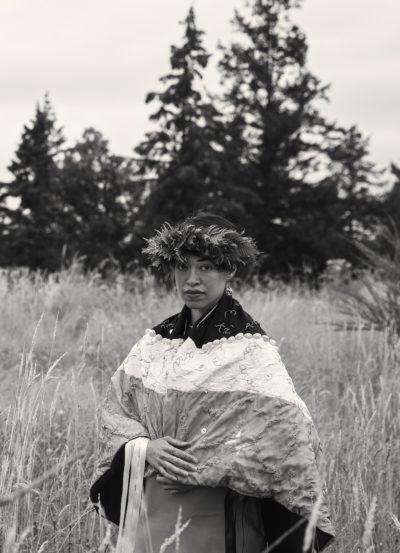 Lehuauakea Biography
Lehuauakea Biography
Lehuauakea is a mixed-Native Hawaiian interdisciplinary artist and kapa maker from Pāpaʻikou on Moku O Keawe, the Big Island of Hawaiʻi. Lehua’s Kānaka Maoli family descends from several lineages connected to Maui, Kauaʻi, Kohala, and Hāmākua where their family resides to this day.
They have participated in several solo and group shows around the Pacific Ocean. Most recently these include ‘A Gift, A Breath’ at Alice Gallery in Seattle, ‘Until We Meet Again’ at Blackfish Gallery in Portland, and ‘He Hae Hōʻailona Ia’ at Aupuni Space in Honolulu. Through a range of craft-based media, their art serves as a means of exploring cultural and biological ecologies, spectrums of Indigeneity, and what it means to live within the context of contemporary environmental degradation. With a particular focus on the labor-intensive making of ʻohe kāpala, kapa cloth, and earth pigment paints, Lehua is able to breathe new life into patterns and traditions practiced for generations. Through these acts of resilience that help forge deeper, reciprocal relationships with ʻāina, this mode of Indigenous storytelling is carried well into the future.
The artist is currently based between Portland and Pāpaʻikou after earning their Bachelor of Fine Arts degree in Painting with a minor in Art + Ecology from Pacific Northwest College of Art.
Lehua’s website.
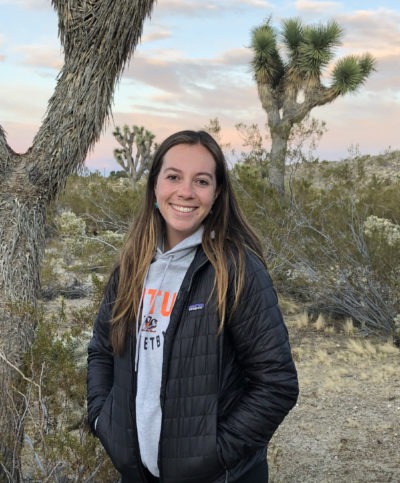 Cameran Bahnsen Biography
Cameran Bahnsen Biography
Cameran Bahnsen was raised in Ventura County, located in Southern CA. She is part Assiniboine (Fort Peck Reservation, Montana) and currently attends the University of California, Santa Barbara. She is pursuing a B.S in Environmental Studies with a minor in American Indian and Indigenous Studies. At a young age, she grew up beach camping with her family, which inspired an early love for the outdoors. Her love of nature, coupled with her cultural connection, continue to drive her aspirations of working within resource management, environmental education, interpretation, tribal relations, and conservation. She enjoys hiking, camping, backpacking, cooking, listening to music, and spending time with friends and family.
The MAHB Blog is a venture of the Millennium Alliance for Humanity and the Biosphere. Questions should be directed to joan@mahbonline.org
This article is also part of the MAHB Arts Community‘s “More About the Arts and the Anthropocene”. The MAHB recognizes the value and importance of learning and listening from Indigenous people. In an effort to honor Indigenous voices, if you are an artist that identifies as Indigenous and you are interested in sharing your thoughts and artwork, as it relates to the disrupted but defining period of time we live in, please contact michele@mahbonline.com

